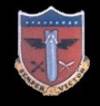|
Crew
5's story begins at Smoky Hill AAF, Salina, Kansas, as did that
of many of the other B-29 crews. Many of the future crewmen assembled
at Salina from Great Bend and Pratt, both in Kansas. Others were
transferred there from a number of other locations scattered throughout
the country. In significant numbers, both ground and air echelon
arrived to form the 39th Bomb Group.
Our
crew was formed in early October of 1944 and included men from
virtually the four Corners of the country. Our Airplane Commander
was a slender young Californian, 1st Lt Robert L. Spaulding. His
hometown of Eagle Rock lay about half way between Pasadena and
Glendale. He was married and a father. Although he weighed a scant
135 pounds soaking wet, we soon learned that his physical size
was more than compensated for by abundant self-confidence bolstered
by a touch of cockiness. To some, this could be aggravating. But
as we learned to know and understand him better, a different opinion
surfaced. - If self-assuredness, decisiveness; and the ability
to unerringly make the right decision time after time constituted
cockiness, then so be it. It indicated to many of us that maybe
more cocky pilots were desperately needed.
Our
pilot was 2nd Lt Al Baldi. He and I had been crewed up together
for a short time at Great Bend. When that crew was disbanded,
we found ourselves together for the second time at Salina. Al's
parents had come to America from Italy early in the century. He
was born in the "Ironbound" section of Newark in 1918, so that
made him a first generation American. When one thinks of it though,
we are all descendents of foreign lands. The only difference is
that some of us have been here a little longer. Crew 5 had many
other foreign roots.
Our
initial bombardier was Lt. William Badgely from Dayton, Washington.
He was later assigned to Crew 7 and
was succeeded by Lt Asa B. Edwards of Albuquerque, New Mexico.
"Ace" was with us for only a short time and then he too, was transferred
to Leo Lewis's Crew 8. Edwards was followed
by yet another, whose name I don't recall as he remained with
us for only a short time. We would pick up our fourth bombardier,
Lt William Hill, at Topeka just prior, to departure for overseas.
Later, on Guam, Billy would be grounded for medical reasons and
be replaced in that position by our radar specialist, Lt Frank
J. Folker. In all, we would accumulate five bombardiers during
the 11 months of our crew's existence. It might possibly qualify
for some sort of record in our Group.
Crew
5's navigator Lt Edward S. Edmundson, Jr. was a North Carolina
native, and had the distinction of being the only southerner on
the crew. This made him the recipient of many good-natured ribbings
from time to time. After a shaky beginning, which might be said
about the rest of us, Ed became an excellent navigator, and would
figure prominently in the saving of a crew whose B-29 was mortally
damaged by flak over Nagoya.
M/Sgt
Glade A. Loy, flight engineer, was born in Oklahoma but had adopted
California as a home state. An auto mechanic in his civilian days,
his transformation to airplanes came easily. Glade was easy-going
and well liked by all the crew. Though we kidded him a lot, we
regarded him as the best engineer in the 39th. We would probably
get an argument from others on this.
Cpl
John F. Magirl from Omaha, Nebraska, the radio operator, was the
youngest member by a few months. Though Jack was very serious
about his job, he also had a unique sense of humor. Competent
and likeable, he gained early acceptance and respect from his
fellow crewmates.
Assigned
as Crew 5's Central Fire Control Specialist, was T/Sgt Robert
Sands, a Pennsylvania native. As CFC gunner, his job included
the supervising of pre-flight and post-flight gunnery procedures,
loading of ammunition, and in-flight supervision of the weapons
system. Bob flew our first 17 missions and was grounded for medical
reasons. A/C Spaulding assigned the left gunner to that position
and he would fill in for the remaining 9 missions.
The
other gunners consisted of Cpl Stanley Phillips in the right blister,
S/Sgt Bob Laird in the left, and Cpl Michael Revock in the tail.
When Laird took over as CFC gunner on their 18th mission, Cpl
Claude "Bud" W. Alger of Waterport, New York replaced him in the
left blister.
Stan's
home was Monaca, Pennsylvania, a small town in the western part
of the state. Mike hailed from Cleveland, Ohio, and Laird from
Vermont in northern New England. The gunners had all started out
in the Cadet program, but were "washed out" when the Army Air
Corps decided it had all the pilots it needed. All had a strong
desire to fly and selected gunnery as the next best alternative.
Little did they know at the time that the unpredictable Army would
reopen the Cadet Program within a few months, but for them, it
was too late.
Finally,
the eleventh man on the crew was radar observer 2nd Lt. Frank
"Bud" J. Folker from Bergenfield, New Jersey. Bud's warm personality
and easy-going way combined with an infectious smile endeared
him to the crew, particularly the enlisted men. Later on, overseas,
Bud would be replaced in the darkroom by 1st Lt. Herman Marthaler, Jr.
of St. Paul, Minnesota.
|





